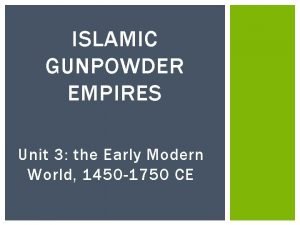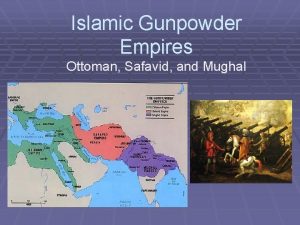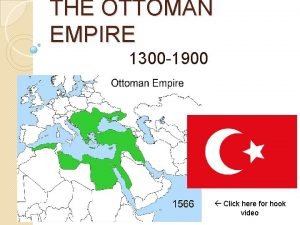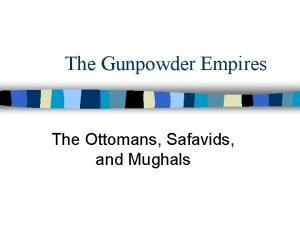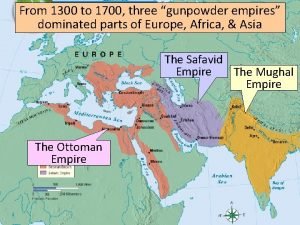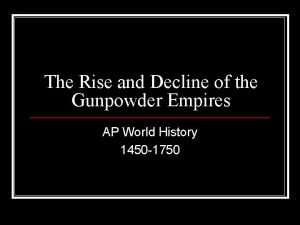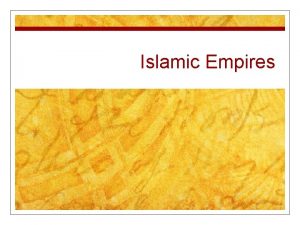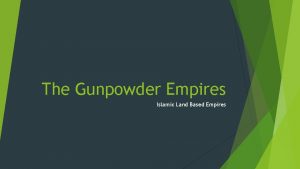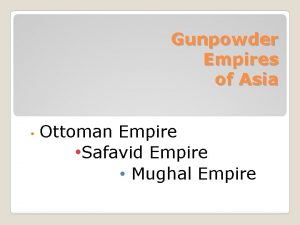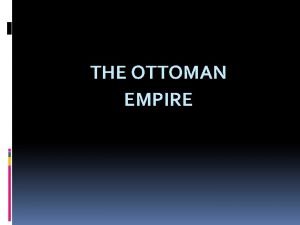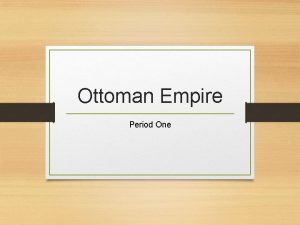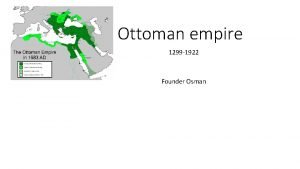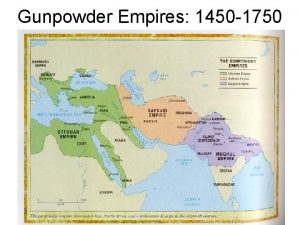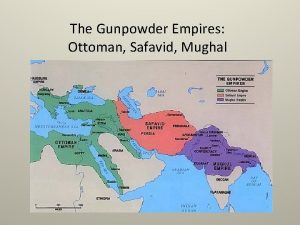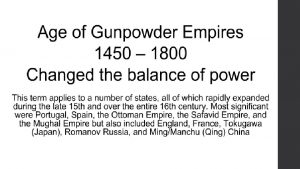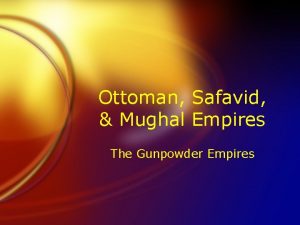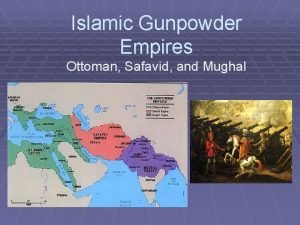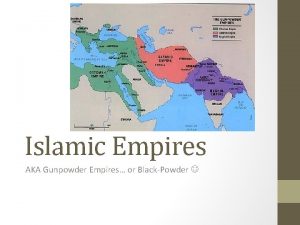Islamic Gunpowder Empires Ottoman Empire 1299 1922 Height















- Slides: 15

Islamic Gunpowder Empires

Ottoman Empire 1299 -1922 Height: 1500 s

Ottoman Political Established by nomadic Turkish groups Centralized administration Sultans power cut by aristocracy, Janissaries, viziers and Islamic scholars Devshirme – Christian boys compelled into slavery to work for the emperor Janissaries – elite fighting group which undermined the power of the noble cavalry Trouble with succession

Ottoman Economy Istanbul – center of trade Decline in mid 1600 s because of the silver trade

Ottoman Culture Sunni Muslim Allowed non-Muslim groups to independently rule themselves Religious scholars banned interaction with Europeans harmed technological advancement

Ottoman Women in royal harems held political power through their sons Elite women had to veil Women allowed to divorce and inherit

Safavid Empire (1501 -1722)

Safavid Political Established by nomadic Turkish groups Centralized administration Ruler controlled aristocracy and Islamic scholars Took Russian boys to train as soldiers Battle of Chaldrian Ottomans v. Safavids (Curbed the spread of Shi’a Islam) No navy

Safavid Culture & Women Shi’ite (Shi’a) Muslims Viewed Europeans as infidels more open to using European military technology Women Elite allowed to divorce and inherit women had to veil

Sunni v. Shi’a (Shi’ite) Sunni - succession after Muhammad death’s went to the best Muslim in the community who was chosen by the community Shi’a – succession after Muhammad death’s went to his family Sunni Shi’a – direct relationship with God – intercession through the “Imam”

Mughal Empire (1527 -1857) Decline: 1700 s

Mughal Political Established by nomadic Turkish groups Centralized administration where ruler has supreme power Small Muslim population ruling mostly non. Muslims Hindus kept out of power lifted under Akbar’s rule Trouble No navy with succession

Mughal Religion Sunni Muslim Created the “Divine Faith” which mixed Islam and Hinduism (Akbar) Development Abolished of the Sikh religion the jizya tax but was later reinstated (Aurangzeb)

Sikhism Founder: Major Guru Nanak Beliefs Monotheistic Everyone is equal and has direct access to God Reincarnation Karma 3 (sets the quality of life) duties Keeping God in mind all the time Earning an honest living Giving charity

Mughal Women Banned the practice of sati (widow suicide) (Aurangzeb) Women in royal harems held political power through their sons Women Child allowed to divorce and inherit marriages still common Veiling (purdah)
 Islamic gunpowder empires webquest
Islamic gunpowder empires webquest Empires
Empires Islamic gunpowder empires ottomans safavids and mughals
Islamic gunpowder empires ottomans safavids and mughals Chapter 19 islamic gunpowder empires
Chapter 19 islamic gunpowder empires Ottoman empire gunpowder
Ottoman empire gunpowder Jagadai khanate
Jagadai khanate Ottoman empire at its height
Ottoman empire at its height Gunpowder empires ap world history
Gunpowder empires ap world history Ottoman safavid and mughal empire map
Ottoman safavid and mughal empire map Map of gunpowder empires
Map of gunpowder empires “gunpowder empires” dominated
“gunpowder empires” dominated Decline of the gunpowder empires
Decline of the gunpowder empires Gunpowder empires definition ap world history
Gunpowder empires definition ap world history Gunpowder empires characteristics
Gunpowder empires characteristics Gunpowder empires map
Gunpowder empires map Gunpowder empires map
Gunpowder empires map

